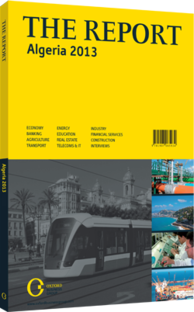City of bridges: Full of natural and historical wonders, Constantine is a hidden gem
Home to almost 450,000 people, Constantine is Algeria’s third-largest city after Algiers and Oran, and is known as the city of suspended bridges. It was selected in 2012 by the Arab League Educational, Cultural and Scientific Organisation (ALECSO) to be the Arab Capital of Culture in 2015. The city, once known as Cirta, the capital of the Kingdom of Numidia, was given its name in 313 by Emperor Constantine the Great. While it was at the crossroads of civilisation for centuries, it remains an unknown city to many. With visitors expected to arrive from at least 22 different Arab countries in 2015, the city has the opportunity to revive its past and shed light on its unique heritage.
UNIQUE SETTING: Located in north-eastern Algeria, the city is surrounded by Skikda and Annaba to the north, Sétif to the west, Batna to the south and Guelma to the east. Constantine is renowned for its topography. Built on mountains 649 metres above sea level, deep ravines, where the River Rhumel flows, divide the city. Seen as a strategic defence point, Constantine has been occupied and ruled at various times by the Phoenicians, the Romans, the Arabs and the Ottomans, until the French conquered the city in 1837.
Traces left behind by these different civilisations are still visible today in different parts of the city. While caves carved into the rocks point to prehistoric settlements, the Casbah – a type of medina or fortress popular in North Africa – features Roman architecture as well as mansions dating back to Ottoman rule, which lasted from the 16th to 19th century. Although most existing official buildings owe their style to the legacy of French colonialism, Ottoman influences remain noticeable in the city’s architecture, particularly from the period of Salah Bey’s rule between 1770 and 1792. Committed to enhancing and reorganising the urban landscape, Salah Bey was the initiator of numerous historical and religious sites which survive to this day, including Sidi El Kittani and Al Akhdar mosques as well as El Kantara bridge, initially built by the Romans and restored during his rule. Legend has it that women from Constantine replaced the white m’laya – a traditional long cloth covering the entire body – with a black one to mourn the Bey’s death following an insurrection in which he was killed in 1792.
TOURISM POTENTIAL: The city’s natural setting and the numerous bridges and viaducts connecting one peak to another offer its inhabitants and visitors picturesque scenery. The 168-metre-long Sidi M’Cid bridge is perhaps the most popular given the stunning views it offers of the natural arch at the bottom of the bridge, with a panorama that takes in Hamma Valley in the background and the cascades running down Pont des Chutes. Built in 1912, the bridge hangs at an altitude of 175 metres over the Rhumel, connecting the Casbah to Sidi M’Cid hill. A 2.5-km tourist route along the Rhumel known as the chemin des touristes was first inaugurated in 1895 and designed by French engineer Frédéric Remes. It used to allow for strolls on a pathway along the sides of the ravines where visitors would pass under, over or across existing bridges and viaducts. Visitors could view historical remains such as the Roman baths as well as thermal water sources and waterfalls. Left to its own fate, the route eventually became inaccessible during the 1950s. However, the 2015 events could give the government the necessary stimulus to restore access to the treasures hidden within the Rhumel’s gorges.
NEW PROJECTS: In the run-up to 2015, authorities plan to spend AD15bn (€142.5m) on rehabilitating the city’s most prominent monuments, including the Mohamed Laïd Al Khalifa cultural centre. There are also plans to build a new national museum of history and art as well as a 3000-seat theatre. Today, Constantine is served by Mohamed Boudiaf International Airport, located around 9 km south of the city and 320 km south-east of Algiers. The airport was recently linked by a new tramway inaugurated in July 2013, connecting it to the city centre. A 7.56-km viaduct – the Transhummel – is expected to be constructed by 2014, easing traffic congestion in time for the big events.
You have reached the limit of premium articles you can view for free.
Choose from the options below to purchase print or digital editions of our Reports. You can also purchase a website subscription giving you unlimited access to all of our Reports online for 12 months.
If you have already purchased this Report or have a website subscription, please login to continue.

